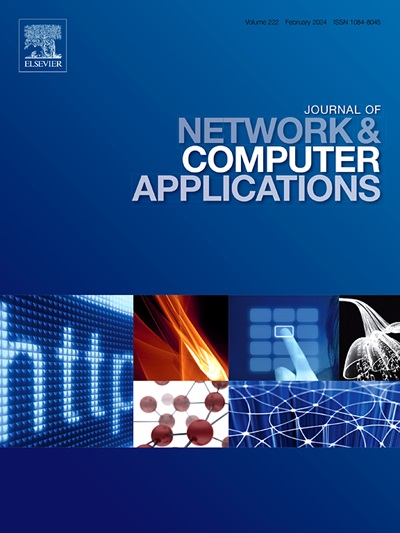ASL: An Accurate and Stable Localization algorithm for multi-hop irregular networks
IF 8
2区 计算机科学
Q1 COMPUTER SCIENCE, HARDWARE & ARCHITECTURE
引用次数: 0
Abstract
Accurate geographical information about nodes is essential in wireless multi-hop networks. Most existing localization algorithms focus on locating nodes in regular network environments, posing challenges for irregular multi-hop networks. To mitigate the impact of irregularities on localization, we propose an Accurate and Stable Localization algorithm (ASL). ASL first infers a hop threshold based on the distribution characteristics of anchors, eliminating erroneous distances and avoiding them in the localization process. Next, under the constraint of the hop threshold, each normal node constructs its sub-region, including it, based on the estimated distance to the anchors. These sub-regions can avoid the occurrence of unreliable localization results and assist in decreasing communication overhead. Finally, the SMA (Slime Mould Algorithm) with the Halton sequence is introduced to search for the optimally estimated locations of normal nodes, which tends to accelerate convergence and improve localization accuracy. Extensive simulations demonstrate that our proposed ASL outperforms state-of-the-art algorithms regarding accuracy and stability when facing network irregularities. Specifically, our proposed ASL achieves a median improvement in localization accuracy ranging from 16.96% to 83.66%.
一种精确稳定的多跳不规则网络定位算法
在无线多跳网络中,节点的准确地理信息至关重要。现有的定位算法大多侧重于在规则的网络环境中定位节点,这给不规则的多跳网络带来了挑战。为了减轻不规则性对定位的影响,我们提出了精确稳定定位算法(ASL)。ASL 首先根据锚点的分布特征推断出一个跳数阈值,消除错误距离,避免其在定位过程中出现。接下来,在跳数阈值的约束下,每个正常节点根据与锚点的估计距离构建包括它在内的子区域。这些子区域可以避免出现不可靠的定位结果,并有助于减少通信开销。最后,我们引入了带有 Halton 序列的 SMA(Slime Mould Algorithm)算法来搜索正常节点的最优估计位置,从而加快收敛速度并提高定位精度。大量仿真表明,我们提出的 ASL 在面对网络不规则时的准确性和稳定性方面优于最先进的算法。具体来说,我们提出的 ASL 在定位精度方面取得了 16.96% 到 83.66% 的中值改进。
本文章由计算机程序翻译,如有差异,请以英文原文为准。
求助全文
约1分钟内获得全文
求助全文
来源期刊

Journal of Network and Computer Applications
工程技术-计算机:跨学科应用
CiteScore
21.50
自引率
3.40%
发文量
142
审稿时长
37 days
期刊介绍:
The Journal of Network and Computer Applications welcomes research contributions, surveys, and notes in all areas relating to computer networks and applications thereof. Sample topics include new design techniques, interesting or novel applications, components or standards; computer networks with tools such as WWW; emerging standards for internet protocols; Wireless networks; Mobile Computing; emerging computing models such as cloud computing, grid computing; applications of networked systems for remote collaboration and telemedicine, etc. The journal is abstracted and indexed in Scopus, Engineering Index, Web of Science, Science Citation Index Expanded and INSPEC.
 求助内容:
求助内容: 应助结果提醒方式:
应助结果提醒方式:


